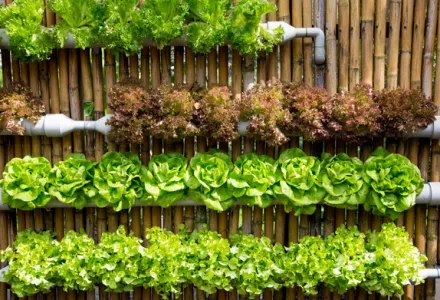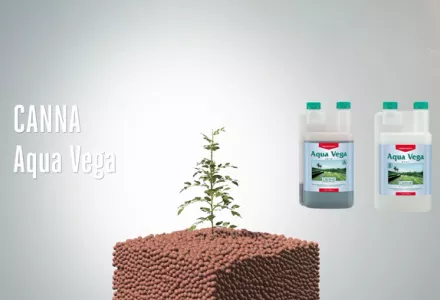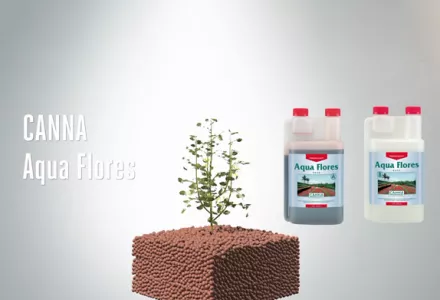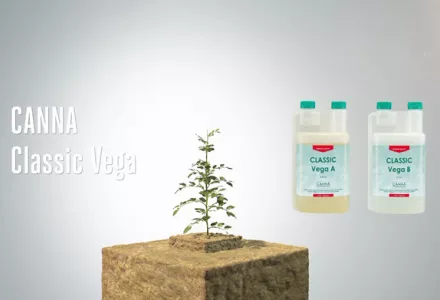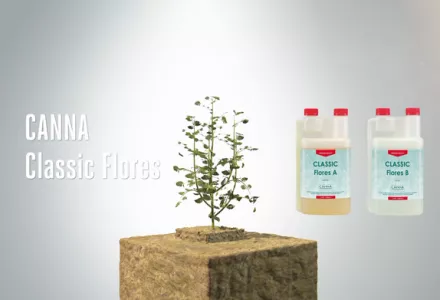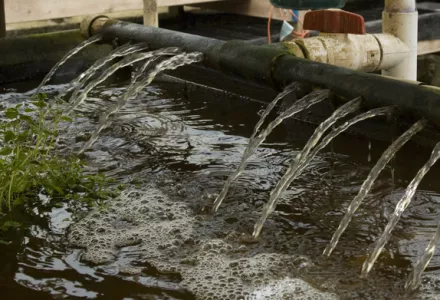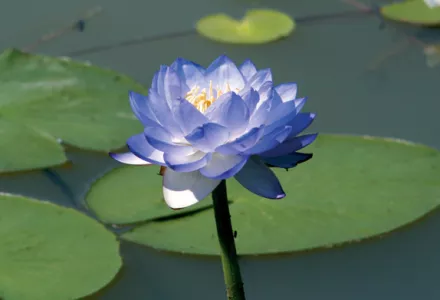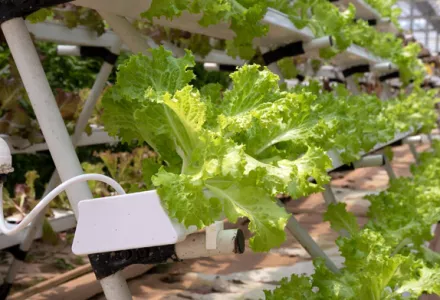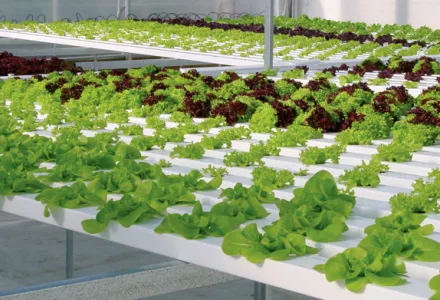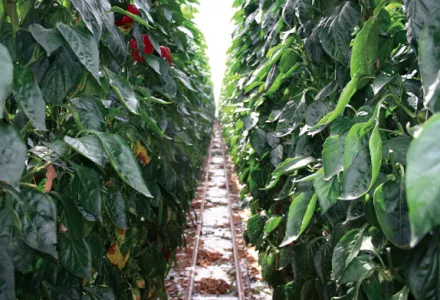Simply put, hydroponic systems use water and nutrients to grow plants. Growing plants solely with water and nutrients poses some challenges but with a bit of care and attention, it's a fabulously cheap, clean and environmentally friendly way to maximise output in small spaces. Most supermarket produce is grown using hydroponics, including tomatoes, green leafy vegetables, pumpkins, beans, peas and much, much more. In fact, 80% of fresh food in Australian supermarkets is grown using hydroponic systems.
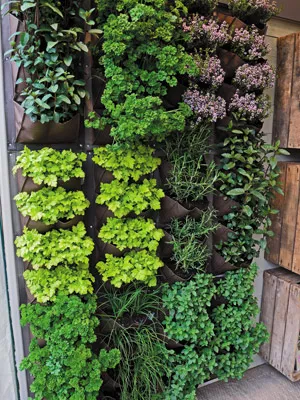
This is because food in hydroponic systems grows faster, yields more, takes up less space, and uses less water—what's not to love?
But it can be difficult to get your head around all the different types of hydroponic set-ups and get a toehold in this fascinating and abundant form of gardening. This article gives a brief run-down of the different types of systems, their pros and cons, what plants work best in each, and some general tips—so you can make the right decision for you.
When looking at a system that would be good for you there are some factors that need to be considered – space, light, investment and amount of time need for setup and maintenance. Each system has its own benefits. Space will determine the size of the system installed and can be as small as having a wall to grow up, or for standing spaces, usually about 1m² and larger.
Light is an important factor as all plants need light to grow – so if there is good natural light this is a bonus, otherwise horticultural lights can be installed to get the best out of your plants. Investment will depend on the size and type of the system and usually starts with a few hundred dollars to achieve a productive system. Once set up, hydroponic systems are generally very low maintenance after initial setup, with the most important part being maintaining the water and nutrient solution.
To make the most of your investment and time it is always best to set up the right system so the advice here would be to talk to a hydroponics retailer or contact us through the contacts section of the CANNA website. Here is a guide to the most common hydroponic systems available.
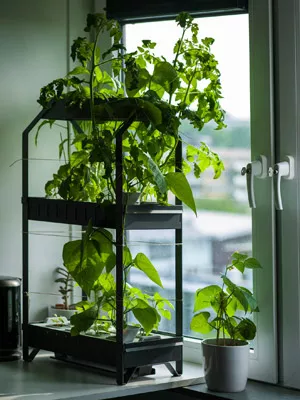
Run to waste
Run to waste systems differ from the others listed here because instead of recirculating the water and nutrients, they are drained off into the ground or a container and disposed of—much like in a regular soil garden.
In this system, you use a grow medium like coconut fibre or rockwool, or anything that holds a lot of water, and this means that this system is a little more forgiving if your pump fails. Run to waste set-ups suit beginner hydroponic gardeners as they behave like potting mix systems—with the biggest difference being the increase in productivity.
This system is set up similarly to the flood and drain, with a submersible pump and timer system, but instead of sinking back into the reservoir, the water is drained out of the system entirely and feeds are less frequent and smaller. This system can suit larger plants very well.
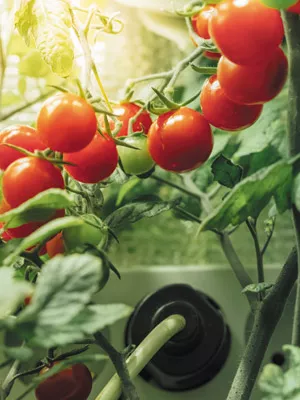
Flood and drain
The flood and drain, or ebb and flow system, is a little trickier and more expensive to set up, but gives you a wide range of plant options, like cucumbers, beans and tomatoes.
This system works by intermittently pumping the water-nutrient solution through the growing medium, which then drains back into the reservoir. As the medium dries out, it forces the plants' roots to grow in search of more water, and more roots mean more nutrients and healthier, happier plants!
For this system, in addition to your water reservoir and grow tray, you will also need a submersible pump, a timer, and tubes to fill and drain the grow medium. The toughest part of the flood and drain set-up is getting the timing of the floods right. Because the water is recycled over the course of a week before being replaced, the PH and nutrient levels can vary, and the growing medium, plant type and growth stage and environmental conditions will also affect the timing of your flood cycles.
Nutrient film technique (NFT)
The nutrient film technique is fabulous for growing shallow-rooted, fast-growing plants like herbs, spinach, radishes and leafy greens. It differs from the flood and drain set-up in that the water-nutrient solution flows around the reservoir and growing tray in a continuous loop, rather than with timed breaks. While you don't need a timer with this technique, you do require two pumps and an air stone to oxygenate the water, as well as tubes or channels to place your plants in.
This is a great water-saving technique, but because no grow medium is used (water flows over the bare roots), if the pump fails the plants will die quite quickly—though the advantage of the bare roots is that it's easy to check for disease!

Deep water culture
In deep water culture hydroponics, the plant's roots grow in a well-oxygenated reservoir full of water and nutrients. This is one of the simpler hydro set-ups, only requiring a deep reservoir (lots of water means a more stable nutrient solution and temperature), an air stone and pump and netted pots with suitable growing media for the plants.
It's a cheap, low-maintenance and fast-growing system, however it can be tricky to stay on top of temperature and pH, nutrient and water levels which can lead to root diseases in your plants. Deep Water Culture is an ideal technique for growing lettuce, other leafy greens and herbs.
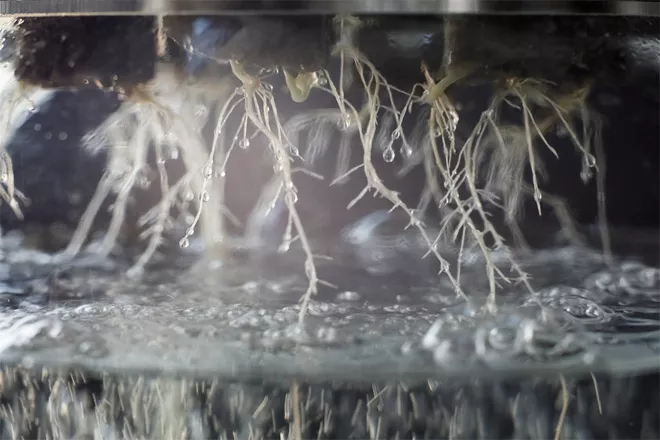
Aeroponics
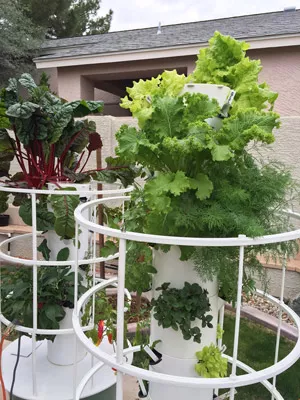
Aeroponics is one of the more complicated hydro systems in use and is probably better suited to advanced gardeners (or people with a lot of time and money!).
It's an environmentally friendly and very effective way to grow a lot of plants (like strawberries and tomatoes) in a small space, but requires a sophisticated set-up, with back-ups in place to prevent equipment malfunction and plants dying from dry roots.
With this technique, plant roots are suspended in the air and sprayed every few minutes with a water and nutrient solution, which allows the roots constant access to oxygen and promotes faster growth.
Wicking
The wick system is a great way to get into hydroponics, as it's one of the cheapest and easiest ways to grow your own microgreens and herbs (but note that this system is not suitable for thirsty plants like tomatoes).
All you have to do is set up a water reservoir underneath your growing tray of non-soil medium, such as perlite or coir, then connect the two containers with wicks (this can be anything that absorbs water—like string, yarn or fabric) so that the water and nutrients are drawn up to the plants. Then, place the set-up in a sunny spot, make sure that the water and nutrients are topped up when required, and flush the growing medium with fresh water every couple of weeks to prevent the build-up of fertiliser harming your plants.
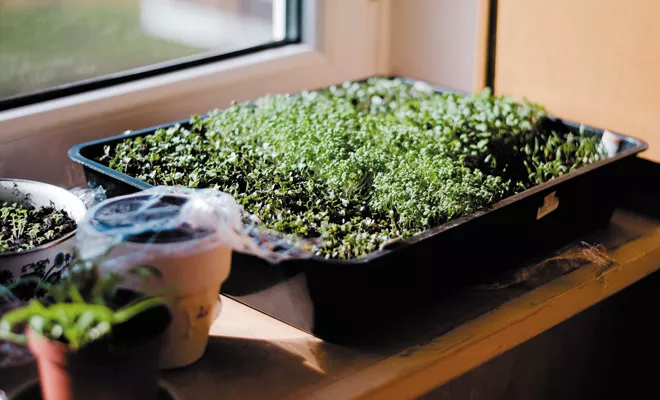
Tricks of the trade
- Use CANNA nutrient solutions—we have a tried and tested fertiliser for every type of hydro set-up, including CANNA AQUA and CANNA Classic
- The ideal air temperature for hydroponics is around 20C°
- Humidity levels should be between 40–60%
- Keep the air flowing with a fan or open window to increase carbon dioxide levels (it helps plants grow faster)
- The best pH levels for most plants in hydro systems are slightly acid (between 5.8 and 6.2)—but it's best to check, as some plants will need a higher pH for optimum growth.
- Light is key—make sure your plants get at least six, but preferably between 12-16 hours of light (whether artificial or natural) every day.
- If you choose to use artificial lights, make sure to set them at a correct distance from your plants—your local hardware store or nursery should be able to advise you on how near or far you should place them. Remember too that different plants have different light requirements depending on where they are in their life cycle. If a plant naturally flowers during summer, then increase the hours of light when you want it to bloom, and vice versa for winter flowering plants.
Happy Gardening.

